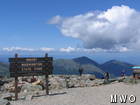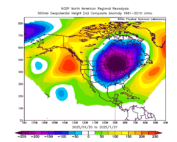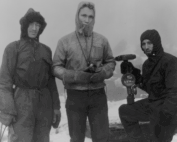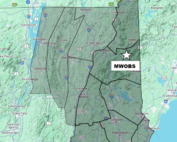NULL
2011-07-28 15:02:02.000 – Peter Strand, Summit Intern
Everyone knows that weather in the White Mountains changes quickly. This is true for almost all mountain ranges, but especially the Whites. Life moves fast at the summit. What with visitors, programs, observations, and of course the ever-changing weather, there are endless tasks to attend to at the Observatory. Occasionally however, after the guests have deserted the summit for the day, it’s difficult not to dwell on the vastness of the view at hand.
Though modern transportation techniques can be used to experience the summit, all you need is your own two feet and some free time to enjoy the surrounding wilderness. The summit of Mount Washington itself lies within the small Mount Washington State Park. However the much of the mountain and the majority of the Whites lie in the White Mountain National Forest. These pieces of land can exist only because of the impressive foresight of many past conservationists and politicians. This year marks the 100th anniversary of the landmark Weeks Act. Introduced by John W. Weeks, the act was passed by congress in 1911 and later led to the creation of the White Mountain National Forest.
If you are interested in learning more about the Weeks Act and the history of the White Mountain National Forest, you are encouraged to attend a talk as part of the Mount Washington Observatory Weeks Act Centennial Lecture Series. This series takes place every Tuesday night at the Weather Discovery Center in North Conway at 7pm.
Peter Strand, Summit Intern
Going with the Flow: Why New England Didn’t Experience Any Classic Nor’easters This Winter
Going with the Flow: Why New England Didn’t Experience Any Classic Nor’easters This Winter By Peter Edwards Why didn’t the Northeast experience any major snowstorms this year? If I had to guess, it’s the
A Look at The Big Wind and Measuring Extreme Winds At Mount Washington
A Look at The Big Wind and Measuring Extreme Winds at Mount Washington By Alexis George Ninety-one years ago on April 12th, Mount Washington Observatory recorded a world-record wind speed of 231 mph. While
MWOBS Weather Forecasts Expand Beyond the Higher Summits
MWOBS Weather Forecasts Expand Beyond the Higher Summits By Alex Branton One of the most utilized products provided by Mount Washington Observatory is the Higher Summits Forecast. This 48-hour forecast is written by MWOBS






